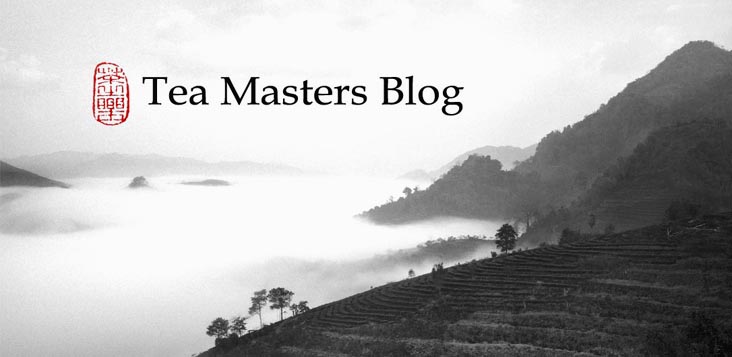This was also an opportunity to let them brew and give them advice to improve their technique. (It was mostly details: I was impressed by how well they are already handling the gaiwan. See also how graceful it is to use your hand to put the leaves in the brewing vessel!)
 |
| 2009 spring competition Dong Ding Oolong |
The second tea we brewed is my winter 2008 Hung Shui Oolong from Dong Ding. This tea didn't participate in the competition. Its roasting was slightly adjusted for my preference: longer and lower temperature. We all felt it tasted so much sweeter and harmonious! It tasted wonderfully fresh also, despite 8 years of age. The advantage with this tea is that we know its exact origin (Feng Huang village) ; with Dong Ding competition, the leaves could come from anywhere in Taiwan. It's a quality label rather than a label of origin.
 |
| Winter 2008 Hung Shui Oolong from Feng Huang |
The links of Dong Ding Oolong with Wuyi in Fujian are numerous. First, the qingxin Oolong cultivar that is used for such tea can be traced back to the Aijiao Oolong cultivar in Fujian Province.
The Dong Ding Oolong competition was started in 1976 by the Tea Extension and Research Station (TRES) together with the Lugu Farmers Association. Dr Wu, Zhen Duo was the director of TRES at that time. He had come to Taiwan from Fujian in 1948. On the Mainland, he had studied tea in WuYi's tea research center.
 |
| 2003 Dong Ding Oolong |
 |
| 2011 Shui Xian Wuyi Yancha |
The ShuiXian leaf (left) is larger than the qingxin Oolong leaves. This explains why it can't be rolled like qingxin Oolong. Its color is very similar to that of the 2003 Dong Ding Oolong. The 2008 and 2009 were greener.
While WuYi Yan Cha and Dong Ding Oolong are clearly different teas, we found there are many connections in history and taste for these Oolongs.














No comments:
Post a Comment